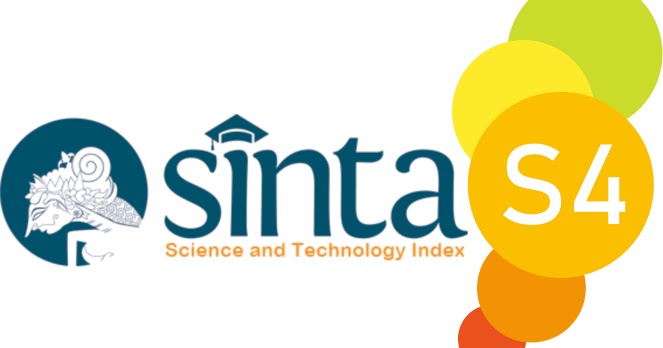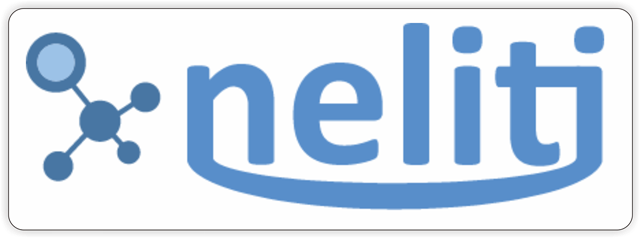WRITING GUIDELINES
- General Requirements
a) The article received is a scientific work that is the result of empirical and conceptual studies in the field of accounting and business, science in management, business strategy and entrepreneurship and has never been published in print and other e-journals.
b) Articles are typed on A4 paper (21 x 29.7 cm) sequential , using Times New Roman letters, a distance of 1 spaces of Maximum 20 pages including bibliography.
c) Articles are sent via https://ojs.unud.ac.id/index.php/bse/user/register to log in, do the register first to get the password and username, after that login with the user and password that has been made click on new submission follow the steps of the journal contributor flow guide, finally click Active Submission. After completing, you can inform the manager of BSE via email to [email protected] with the format: name, address of the institution, mobile phone number, and correspondence address.
- Article Writing Systematics
TITLE, a maximum of 15 Words, using a proper case letter size of 12 pt, bold.
AUTHOR'S NAME, written in full without title and without position font Times New Roman 11 pt, write side by side (if the author is more than 1) starting from the main author, complete with the name of the affiliation in the left section (use template https://drive.google.com/drive/u/6/folders/1bdxPK1jSMPNX3930PZY-y7cO9yhNMxep).
ABSTRACT includes a summary of research including problems, objectives, methods, results, and contributions of research results. The abstract is presented after the title consists of 150-250 words written in English. Abstracts are given maximum 5 keywords to facilitate the compilation of article indexes.
INTRODUCTION contains research background, problem formulation and research benefits, theoretical basis, and hypothesis development. (Preliminary Proportion of 15-20% of the total length of the article and no sub-chapters or numbering)
RESEARCH METHODS containing data and data sources, research variables, techniques data collection, as well as data analysis techniques. (Proportion of Research Methods is 15-20% of the total article length and there may not be subchapters or numbering).
RESULTS AND DISCUSSION contain the results of hypothesis testing, the results of data analysis. Research and descriptive statistics are needed. (Proportion of Results and Discussion 40-60% of the total length of the article and no sub-chapters or numbering)
CONCLUSIONS containing the conclusions of the research, accompanied by suggestions and implications for subsequent research.
(Proportion of Conclusions 15-20% of the total length of the article and no sub-chapters or numbering)
REFERENCES contain all sources referred to in writing the article. (Using reference management applications (EndNote, Mendeley, Zotero, etc.) Reference Lists at least 80% in the form of libraries published in the last 5 years. Reference is written using the American Psychological Association 7th Edition Style.
APPENDIX contains tables, figures, and research instruments used.
- Additional Provisions
a) All pages (including attachments, and references) are numbered by page. Authors are required to attach similarity test results, with a maximum result of 20%.
b) Each table or figure is given a serial number placed in the center of the table or figure, the title is placed after the number that matches the contents of the table or figure. The data source is placed at the bottom left of the table or figure.
c) Citations and references in the text are written using bracketed reference techniques (author's last name, year: page number)
For example:- One source of citation with one author (Peter, 2021)
- One citation source with two authors (Saylor & Buffet, 2022)
- One source with more than two authors (Dewi et al., 2023) or (Richard et. al., 2020)
- Two citation sources with different authors (Ani, 2019; Bagus, 2022)
- If the publication year is the same (Cahyani, 2022a, 2022b)
- Sources of citations originating from the work of an institution should mention the acronym of the institution concerned, for example (IAI, 2022)
d) A list of references (only those that are sources of citations) is made with the following writing conditions:
A list of references is arranged alphabetically according to the author's name or the name of the institution along with the year of publication, the title of the journal or textbook, the name of the journal or publisher, page numbers if necessary.
For example:
Ebiringa, O., Yadirichukwu, E., Chigbu, E. E., & Ogochukwu, O. J. (2013). Effect of Firm Size and Profitability on Corporate Social Disclosures: The Nigerian Oil and Gas sector in Focus. British Journal of Economics, Management & Trade, 3(4), 563–574. https://doi.org/10.9734/BJEMT/2013/5147
Ambadar, J. (2008). Corporate Social Responsibility (CSR) Dalam Praktik Di Indonesia. Jakarta: PT. Elex Media Komputindo.
Purwaningsih, R. P., & Suyanto. (2015). Pengaruh Profitabilitias dan Leverage Terhadap Pengungkapan Corporate Social Responsibility (CSR) Perusahaan. Syariah Paper Accounting FEB UMS, 1(1), 133–140. Retrieved from https://publikasiilmiah.ums.ac.id/bitstream/handle/11617/6080/B.4.pdf;sequence=1
e) Reference and quotation must be following the rules of non-plagiarism as stipulated in the Regulation of the Minister of National Education of the Republic of Indonesia No.17 the Year 2010.
f) The things done by article writers related to licensing, citing, or using computer software for article making, data processing, and other matters related to IPR, along with the legal consequences that may arise, are entirely the responsibility of the article writer. - As part of the submission process, authors are required to check off their submission's compliance with all of the following items, and submissions may be returned to authors that do not adhere to these guidelines.
-
- The submission has not been previously published, nor is it before another journal for consideration (or an explanation has been provided in Comments to the Editor).
- The submission file is in OpenOffice, Microsoft Word, RTF, or WordPerfect document file format.
- Where available, URLs for the references have been provided.
- The text is single-spaced; uses an 11-point font Times New Roman; employs italics, rather than underlining; and all illustrations, figures, and tables are placed within the text at the appropriate points, rather than at the end.
- The text adheres to the stylistic and bibliographic requirements outlined in the Author Guidelines, which are found in About the Journal.
- If submitting to a peer-reviewed section of the journal, the instructions in Ensuring a Blind Review have been followed.
- Review Policy
- Initial Screening
All submitted and invited papers should go through an initial screening process to screen papers that are not suitable or have had a different focus, marginal papers, weak papers, etc. Only relevant and high-quality papers should be processed and sent to referees (we do not want to waste the time of the referees by sending poor or marginal papers to them). Send every paper which passes the initial screening process to be refereed by three experts.
- Refereeing Process.
- If two referees accept the paper, the paper is then considered for selection. However, if they accept the paper BUT the paper only scored marginal or just acceptable for Originality, Quality, Relevance, Presentation, and Recommendation then the paper is not up to the standard of the journal, and the editor should reject it.
- If two referees reject the paper, the paper is rejected and the authors are informed.
- If two referees disagree, then the third referee’s decision is final. Editor-in-Chief may reject papers that have been rejected by referees but cannot send acceptance letters to authors until the selected papers for the special issue and their refereeing reports have all been reviewed by the Editor-in-Chief.
- Publication Process
The Publisher reserves the right to make a final review, i.e. final acceptance of the papers is subject to this final review process which is a part of the publisher's quality assurance process before publication. The final manuscript of each selected paper should include:
- Title of the paper, names of authors, their affiliations, complete addresses, and email addresses.
- The name, address, email address, and fax number of the corresponding author to whom the proof of the typeset paper should go for checking.
- A brief abstract.
- Brief biographical notes about authors.
- High-quality and high-resolution figures suitable for printing high-quality figures in black and white.
If papers have been refereed and accepted and sent for typesetting, the authors have to abide by what they have written; no further changes are acceptable in:
- Author‘s details (e.g. adding more names or deleting names) or in their sequence
- The content of the paper (except for typesetting corrections) If authors wish to make changes to content, then the paper has to be withdrawn and must go back to be refereed as a new paper.
If there is any dispute about authorship or intellectual property, the paper must be withdrawn completely from publication until the authors settle their legal claims. It is not the publisher’s responsibility to solve or interfere in any intellectual property dispute.
- Typesetting
- When the papers for the special issue are accepted by the final review process, the papers are processed for typesetting and all the succeeding publication processes will be conducted by the publisher.
- The corresponding author of each paper will receive by email the proof of his/her paper to check. He/she must return the corrected proofs within seven days to avoid any delays in publishing the special issue. If the research society has not received a response by then, the research society will contact Guest Editors to help chase the author for a reply.
After having their corrections incorporated by the typesetter, the proofs will again be sent to authors to check and to ensure that all their corrections are included. It is the responsibility of authors to check and correct the proofs of their papers. Papers cannot be published until they are checked and approved by authors. And papers cannot be amended once they are published, except in very exceptional circumstances, so authors should take great care in approving the final version for publication.



















